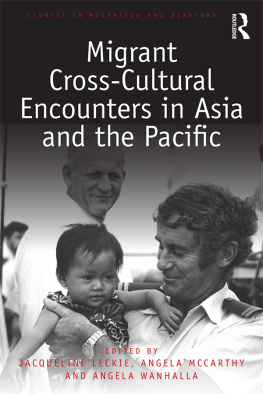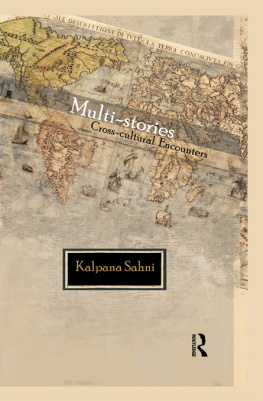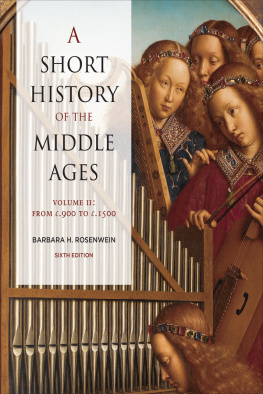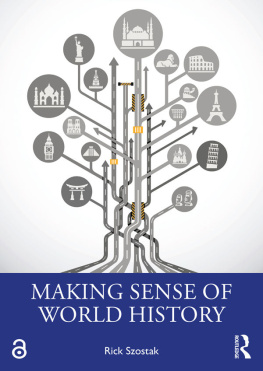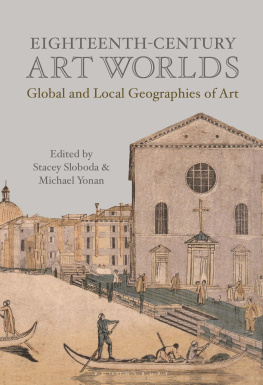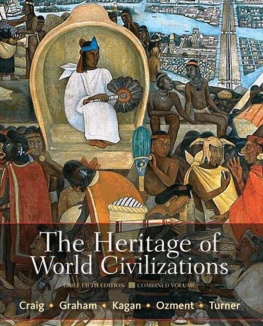Traditions & ENCOUNTERS
SECOND EDITION
Traditions & ENCOUNTERS
A BRIEF GLOBAL HISTORY
VOLUME I: TO 1500
JERRY H. BENTLEY
University of Hawaii
HERBERT F. ZIEGLER
University of Hawaii
HEATHER E. STREETS-SALTER
Washington State University



Published by McGraw-Hill, an imprint of The McGraw-Hill Companies, Inc., 1221 Avenue of the Americas, New York, NY 10020. Copyright 2010, 2008. All rights reserved. No part of this publication may be reproduced or distributed in any form or by any means, or stored in a database or retrieval system, without the prior written consent of The McGraw-Hill Companies, Inc., including, but not limited to, in any network or other electronic storage or transmission, or broadcast for distance learning.
This book is printed on acid-free paper.
1 2 3 4 5 6 7 8 9 0 DOW / DOW 0 9
ISBN: 978-0-07-728642-2
MHID: 0-07-728642-1
Vice President and Editor in Chief: Michael Ryan
Publisher: Christopher Freitag
Sponsoring Editor: Matthew Busbridge
Director of Development: Rhona Robbin
Developmental Editor: Thom Holmes
Marketing Manager: Pamela Cooper
Editorial Coordinator: Sarah Remington
Production Editor: Brett Coker
Manuscript Editor: Sheryl Rose
Cover and Interior Designers: Cassandra Chu and Linda Beaupre
Manager, Photo Research: Brian J. Pecko
Photo Researcher: Kim Adams
Production Supervisor: Louis Swaim
Digital Product Manager: Jocelyn Spielberger
Media Project Manager: Jennifer Barrick
Composition: Thompson Type
Printing: 70# Sterling Ultra Web Matte by R.R. Donnelley & Sons
Cover Credits: Emperor Tang Taizong, The Art Archive/National Palace Museum Taiwan; Birth of Mahavira, Borromeo/Art Resource, NY; Royal Standard of Ur, Erich Lessing/Art Resource, NY; Lucas Cranach, Martin Luther, Scala/Art Resource, NY; Emperor Justinian I, Bishop Maximianus, and attendants, Cameraphoto Arte, Venice/Art Resource, NY; Illustration of merchants and customers in a town market, Scala/Art Resource, NY; Gandhi, Bettmann/Corbis; Chiracahua Apaches, Corbis; Dona Marina, Hernn Corts, and Tlaxcala entering into an alliance, The Granger Collection, New York; Young girls reading books with a poster of Mao Zedong in the background, Sovfoto; World Map, Visual Language.
Credits: The credits section for this book begins on and is considered an extension of the copyright page.
Library of Congress Cataloging-in-Publication Data
Bentley, Jerry H., 1949
Traditions and encounters : a brief global history / by Jerry H. Bentley, Herbert F. Ziegler, and Heather E. Streets-Salter. -- 2nd ed.
p. cm.
Includes bibliographical references and index.
ISBN-13: 978-0-07-338551-8 (alk. paper)
MHID: 0-07-338551-4 (alk. paper)
1. World history--Textbooks. 2. Intercultural communication--History--Textbooks. I. Ziegler, Herbert F., 1949 II. Streets-Salter, Heather E. III. Title. IV. Title: Traditions and encounters.
IV. Title: Traditions and encounters.
D20.B42 2006
909dc22 2009005923
The Internet addresses listed in the text were accurate at the time of publication. The inclusion of a Web site does not indicate an endorsement by the authors or McGraw-Hill, and McGraw-Hill does not guarantee the accuracy of the information presented at these sites.
www.mhhe.com
Brief Table of Contents
Table of Contents
PART I
THE EARLY COMPLEX SOCIETIES, 3500 TO 500 B.C.E.
PART II
THE FORMATION OF CLASSICAL SOCIETIES, 500 B.C.E. TO 500 C.E.
PART III
THE POSTCLASSICAL ERA, 500 TO 1000 C.E.
PART IV
AN AGE OF CROSS-CULTURAL INTERACTION, 1000 TO 1500 C.E.
PRIMARY SOURCES FROM THE PAST
A BRIEF NOTE ON USAGE
This book qualifies dates as B.C.E. (Before the Common Era) or C.E. (Common Era). In practice, B.C.E. refers to the same epoch as B.C. (Before Christ), and C.E. refers to the same epoch as A.D. (Anno Domini, a Latin term meaning in the year of the Lord). As historical study becomes a global, multicultural enterprise, however, scholars increasingly prefer terminology that does not apply the standards of one society to all the others. Thus reference in this book to B.C.E. and C.E. reflects emerging scholarly convention concerning the qualification of historical dates.
Measurements of length and distance appear here according to the metric system, followed by their English-system equivalents in parentheses.
The book transliterates Chinese names and terms into English according to the pinyin system, which has largely displaced the more cumbersome Wade-Giles system. Transliteration of names and terms from other languages follows contemporary scholarly conventions.
Preface
HOW IS IT POSSIBLE TO MAKE SENSE OF THE ENTIRE HUMAN PAST?
W ORLD HISTORY IS ABOUT PEOPLE . But it is easy to lose people in the telling of history. Traditions and Encounters: A Brief Global History is not merely a recounting of the facts of history. Rather, we wanted to tell the story of people in history, the traditions they embraced and the encounters with other cultures that brought about inevitable change.
It is the interaction of these traditions and encounters that provides the key to making sense of our past. Human communities furthered themselves not by remaining isolated, but by interacting with others and exploring the benefits and risks of reaching out. The vitality of historyand its interpretationlies in understanding the nature of individual traditions and the scope of encounters that punctuated every significant event in human history.
Traditions & Encounters: A Brief Global History provides a global vision of history that grows increasingly meaningful in a shrinking world. The theme of traditions draws attention to the formation, maintenance, and sometimes collapse of individual societies. Because the worlds peoples have also interacted regularly with one another since the earliest days of human history, the theme of encounters directs attention to communications, interactions, networks, and exchanges that have linked individual societies to their neighbors and others in the larger world.
Traditions & ENCOUNTERS
T ELLING T HE S TORY OF P EOPLE
The themes of traditions and encounters are at the heart of every chapter in the text. They provide a lens through which to interpret the affairs of humankind and the pressures that continue to shape history. All aspects of the text support these themesfrom the organization of chapters, engaging stories of the worlds peoples, to the robust map program and critical-thinking features.
O RGANIZATION : S EVEN E RAS OF G LOBAL H ISTORY
We discuss the worlds development through time by organizing it into seven eras of global history. These eras, treated successively in the seven parts of this book, represent coherent epochs that form the larger architecture of world history as we see it. Every region of the world is discussed in each of the seven eras. The eras owe their coherence in large part to the networks of transportation, communication, and exchange that have linked peoples of different societies at different times in the past. This structure allows us to make cross-cultural comparisons that help frame world history for students to put events in a perspective that renders them more understandable.
Next page

